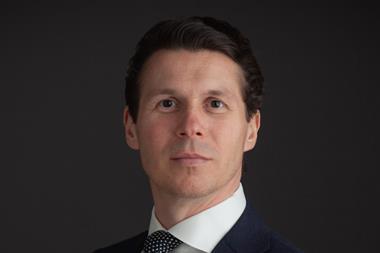The non-life insurance industry stands at a crossroads. In the recent past there has been poor underwriting performance supported by booming stock markets world-wide. One of the reasons for the prolonged soft market has been the excess capital available in the insurance industry. This capital has chased rates lower as competition for business has been fierce.
In order to achieve better returns, companies have been consolidating in an attempt to gain economies of scale and to reduce some of the capacity in the market. This process still has a long way to go. So what is the current structure of the industry and what are the key drivers that are forcing the urge to merge? And how should companies assess any potential partners for marriage?
There are many drivers that are bringing change to the marketplace. All of these are interdependent and help give some insight into how partners are selected. We go on to discuss some of these below.
The reinsurance industry is polarised between the large behemoths of Swiss Re and Munich Re, followed by two other large reinsurers and then a chasing pack of smaller writers. The situation is similar in the direct market, where global insurance groups are beginning to dominate markets worldwide.
AIG, Axa, Allianz and Zurich are all part of the new global players that operate either under
a single global brand (e.g. AIG) or as separate subsidiaries within each territory (e.g. Allianz with Cornhill in the UK and Fireman's Fund in the US).
These have produced a wave of consolidation in some local markets where they have either acquired a specialist niche player to give them presence in a market sector or increased their local presence. The acquisition by Guardian of PPP is an example of this. In some instances competitors have merged to increase their scale and, consequently, competitive position in the global market; as was the case with CGNU.
It's happening everywhere
The financial services market is also converging and consolidating. Banks are acquiring insurers to better leverage their customer base. The merger of Travellers and Citicorp in the USA is a good example of this trend. Investment banks are setting up reinsurance undertakings for regulatory arbitrage and to serve their client base better. Reinsurers are buying advisory houses and issuing insurance derivative structures. Companies are recognising that their core competency is either the management of risk, and therefore leveraging their market rating and capital structure more efficiently, or the distribution of products that assist others to manage risk.
The ability of the internet to transform businesses and to create new ways of doing business is well documented. It is a driver of change in the business models that companies will be operating in the future. It is bringing changes to the way products are created, distributed and protected by reinsurance or syndication. These changes are bringing distributors from outside the industry into the insurance cycle. In the UK, Boots has leveraged its strong healthcare brand to enter the travel and health insurance markets. In the US, ecoverage has been created as a virtual insurer operating solely in cyberspace.
Distributors such as Screen Trade are beginning to attack the retail end. In the reinsurance market place, companies such as Swiss Re are exploring how to better provide information and data to their clients. They have also employed the internet to auction capacity, changing the rules of doing business.
So how should companies faced with these external pressures measure up prospective partners? We have considered the actuarial assessment, which we consider needs to be the core of any approach. Mergers and acquisitions (M&A) have traditionally been executed on an opportunistic basis.
Companies either identify, via rating downgrades or market rumour, that an organisation is available for sale or are approached by an investment bank with the idea that a transaction may be possible with a particular counterparty. This has produced a very ad hoc approach to the assessment of the target company. A better strategy might be to define the strategic requirements of the group or organisation first and then to identify the company or companies that best fit those strategic objectives. This, of course, is an idealistic scenario.
In practice, actuarial due diligence usually takes place within the context of a data room where an opinion has to be formed on the basis of an assessment of the claims reserves for:
Identify the key points
The assessment would be intended to identify best estimates and also any margins within the target's assessment or any areas where reserve strengthening may be necessary. Additionally, the acquirer or counterparty in the case of a merger should also consider the adequacy of any unexpired risk provision and the quality and security of any reinsurance asset.
The exercise should also encompass an assessment of the future business of the company. This should cover a review of the company's business plans and a benchmarking of the projected loss ratios included in the plans against those achieved historically. It should compare the latter against those achieved by its competitors. The future business assessment is a critical part of the evaluation of the goodwill of the insurance undertaking. There are many methods that can be used for this assessment. The simpler ones are as a multiple of the projected net written premiums. More appropriate ones value the cash emerging from each year's insurance result where the net result is derived from all items of cash flow, including investment income on the technical reserves.
Finally, the acquirer needs to consider the capital structure of the combined business or the use of capital in the combined business. There are many methods that can be employed to calculate the level of capital that is required to support the business over future years. The most appropriate one is to use a Dynamic Financial Analysis (DFA) Model to make the assessment. DFA considers the volatility of both the assets and liabilities of the combined business by projecting all future cash flows. This projection is done using simulation techniques that incorporate at a very high level the characteristics of the combined business going forward.
Measuring up
The liability projection should allow for the market cycle and for the characteristics of the underlying business. The assets should utilise investment returns from an economic scenario generator. The model should output a range of future results for the combined business that can be compared with results for any of the companies in isolation. This would assist management to evaluate and assess the future strategies of the business and, when combined with a capital allocation tool, could provide the information to measure the return on capital employed.
The above discourse only highlights the type of work that needs to be done by an actuarial adviser in measuring up the target company. When done properly it acts as a rudder on the merger – guiding management on the financial implications of the transaction. There are of course many other issues that should be taken into account. These will include strategic fit, cost savings, people issues and IT matters. All of these have to be examined to satisfy each party that the merger will produce the benefits that they have targeted.
It should, however, be remembered that notwithstanding the complexity of the assessment of the target, the external factors of serving customers, satisfying the rating agency demands and producing a positive return on the capital employed should be the target of any M&A activity.
Hosted by comedian and actor Tom Allen, 34 Gold, 23 Silver and 22 Bronze awards were handed out across an amazing 34 categories recognising brilliance and innovation right across the breadth of UK general insurance.












































